(Fluxus Art Movement: Definition, Artists and Examples - dans le gris)

George Maciunas. Poster for Fully Guaranteed 12 Fluxus Concerts: Street Events, Fluxhall, 359 Canal Street, New York, March-May, 1964.
(Fluxus Art Movement: Definition, Artists and Examples - dans le gris)
What is the Fluxus Art Movement?
According to the explanation provided by Tate, Fluxus derives its name from the Latin word "fluxus," meaning "flowing." In English, "flux" refers to a flowing out. George Maciunas, a central figure in Fluxus, articulated the movement's purpose as aiming to "promote a revolutionary flood and tide in art, promote living art, anti-art." This statement bears strong resemblance to the ethos of Dadaism, an early twentieth-century art movement known for its anti-establishment and anti-art sentiments.
(Fluxus Art Movement: Definition, Artists and Examples - dans le gris)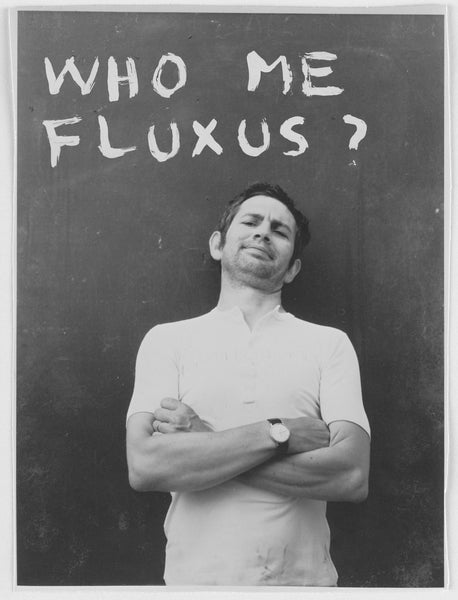
Ben Vautier. Who Me Fluxus?. c. 1980.
(Fluxus Art Movement: Definition, Artists and Examples - dans le gris)
Fluxus integrates art into everyday life, emphasizing simplicity and blurring the boundaries between art and the mundane. Its works, whether physical or performative, often display a critical attitude toward art itself, prioritizing process over the finished product. Fluxus artists reject the notion of art as a rarefied commodity reserved for the elite, advocating instead for a democratic and inclusive approach to creativity.
While Fluxus shares similarities with Conceptual art in its rejection of traditional artistic conventions and emphasis on ideas over aesthetics, it maintains its distinct focus on the integration of art and life. The artists associated with Fluxus include Yoko Ono, Nam June Paik, Ay-O, and Ben Vautier. Each of these artists brings their unique perspectives and contributions to the Fluxus art movement.
(Fluxus Art Movement: Definition, Artists and Examples - dans le gris)
Origins and Founding of Fluxus
Fluxus originated as a collaborative endeavor among a collective of artists, musicians, and performers who shared a distinctive attitude toward art, rather than being a formalized movement. Among these individuals, Lithuanian American artist George Maciunas is often regarded as a central figure in Fluxus history. He played a significant role in organizing the inaugural Fluxus festivals and crafting manifestos that articulated the movement's principles.
(Fluxus Art Movement: Definition, Artists and Examples - dans le gris)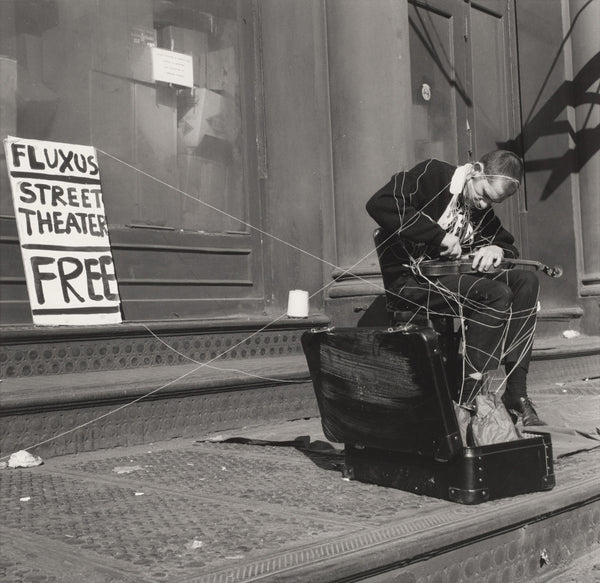
Takehisa Kosugi, Ben Vautier, George Brecht. Simultaneous performance of Anima 1, Attache de Ben, and Solo for Violin, performed during Fully Guaranteed 12 Fluxus Concerts, New York, May 23, 1964.
(Fluxus Art Movement: Definition, Artists and Examples - dans le gris)
The spirit of rebellion inherent in Fluxus, directed against the commercial art market, elitism, and societal conventions, finds its origins in movements such as Dadaism, Futurism, and Surrealism. Its irreverent and youthful energy resonated with the emerging counterculture of the 1960s. While its core was situated in New York City, whereGeorge Maciunas and numerous other artists were located, Fluxus initiatives emerged throughout Europe and in Japan.
Notably, Maciunas advocated for the notion of artists' "dispensability," a concept that underscored the collaborative and egalitarian spirit of Fluxus. As a result, Maciunas refrained from signing his own works, and many Fluxus pieces remain uncredited to any single artist. This intentional anonymity has contributed to ongoing confusion surrounding the attribution of key works within the Fluxus oeuvre.
(Fluxus Art Movement: Definition, Artists and Examples - dans le gris)
Artists and Examples of Fluxus Art
Ben Vautier
(Fluxus Art Movement: Definition, Artists and Examples - dans le gris)

Ben Vautier, Nine Directions For Art.
(Fluxus Art Movement: Definition, Artists and Examples - dans le gris)
A founding member of the Fluxus group in the early 1960s, Ben Vautier, a French artist born in Italy, is widely recognized for his performances, installations, and especially his text-based paintings. Vautier's Fluxus works revolve around defining art as a practice that unifies life, objects, and philosophy. He has explained, "What is culture? Culture is a fairytale that we have created. It can be manipulative. The purpose of culture is to amuse poor people and rich people alike."
In 1958, Vautier left his job at a bookstore and opened a stationery and record store called Laboratory 32 (Le Magasin), which he ran until 1973, creating a salon-like meeting place for people to discuss new ideas. During this time, Vautier met Yves Klein, John Cage, and George Maciunas, becoming involved in the early stages of the Fluxus art movement.
(Fluxus Art Movement: Definition, Artists and Examples - dans le gris)
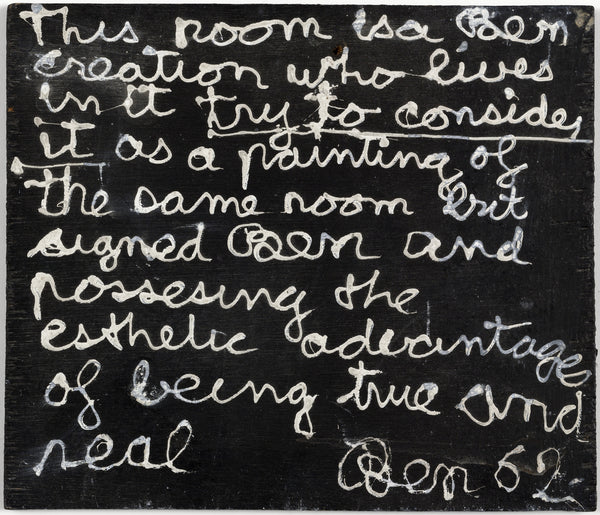
Ben Vautier, This Room is a Ben Creation, 1962.
(Fluxus Art Movement: Definition, Artists and Examples - dans le gris)
Yoko Ono

George Maciunas' photograph of Yoko Ono with her Painting to See in the Dark (Version 1), 1961.
(Fluxus Art Movement: Definition, Artists and Examples - dans le gris)
Yoko Ono is an avant-garde artist closely associated with both the Fluxus art movement and Conceptual art. Born in Japan, she moved to New York City in the late 1950s. One of her most famous artworks, Cut Piece (1964), is classified as both Conceptual art and Performance art. In this piece, Ono sat motionless on stage while audience members were invited to approach and cut away pieces of her clothing. The work explored themes of vulnerability, trust, and the objectification of women, embodying Fluxus principles of audience participation and the blurring of boundaries between art and life. As she once said, "Art is my life and my life is art."
(Fluxus Art Movement: Definition, Artists and Examples - dans le gris)
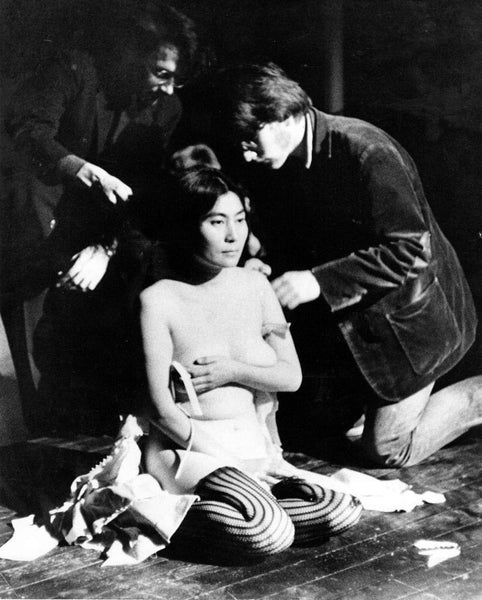
Yoko Ono, Cut Piece, 1964.
(Fluxus Art Movement: Definition, Artists and Examples - dans le gris)
Do It Yourself Fluxfest (1966) is a collection of 20 pieces featuring short instructional texts by Yoko Ono paired with graphic illustrations by George Maciunas. Originally published in the February 1966 issue of the Fluxus magazine cc V TRE as part of "3 newspaper events for the price of $1," this compilation embodies the Fluxus principle that emphasizes the accessibility of art to all. The title "Do It Yourself Fluxfest" reflects a DIY (Do It Yourself) ethos, common in Fluxus events, where active participation is encouraged. Through the humorous interplay between Ono's instructions and Maciunas' adept treatment of text and pictorial motifs, these pieces offer amusing and insightful reflections on the collaborative nature of artistic expression within the Fluxus movement.
(Fluxus Art Movement: Definition, Artists and Examples - dans le gris)

Yoko Ono, Do It Yourself Fluxfest Presents Yoko Ono & Dance Co., 1966.
(Fluxus Art Movement: Definition, Artists and Examples - dans le gris)
Nam June Paik
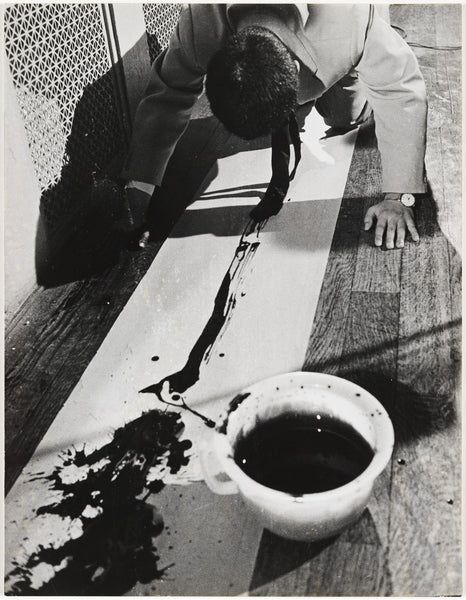
La Monte Young's Composition 1960 #10 (to Bob Morris) performed by Nam June Paik during Fluxus Internationale Festspiele Neuester Musik, Städtisches Museum, Wiesbaden, September 1–23, 1962.
(Fluxus Art Movement: Definition, Artists and Examples - dans le gris)
Nam June Paik, born in Seoul, fled with his family in 1950 to escape the Korean War, traveling first to Hong Kong and then to Japan. As a member of the international avant-garde Fluxus movement, he earned recognition as a visionary for his prediction that we would one day develop international telecommunications networks. Additionally, his early experiments with the emerging technology of video have led scholars to dub him the "father of video art."
(Fluxus Art Movement: Definition, Artists and Examples - dans le gris)

Nam June Paik's prepared piano at his Exposition of Music – Electronic Television, Galerie Parnass, Wuppertal, March 11-20, 1963.
(Fluxus Art Movement: Definition, Artists and Examples - dans le gris)
Paik believed fervently in technology’s potential to foster connections among people, nations, and cultures. In 1986, he declared, "Our life is half natural and half technological. Half-and-half is good. You cannot deny that high-tech is progress. We need it for jobs. Yet if you make only high-tech, you make war. So we must have a strong human element to maintain modesty and preserve natural life."
(Fluxus Art Movement: Definition, Artists and Examples - dans le gris)
George Maciunas

George Maciunas is one of the key figures in the Fluxus art movement.
(Fluxus Art Movement: Definition, Artists and Examples - dans le gris)
George Maciunas served as the founder and central coordinator of Fluxus from 1962. Born in Kaunas, he fled to Germany at the end of the war before eventually immigrating to the USA. Maciunas pursued studies in architecture, art history, graphic design, and musicology at several institutions over eleven years (1949-1960), including the Cooper Union School of Art, Carnegie Institute of Technology Pittsburgh, and the Institute of Fine Arts at New York University.
Despite the diversity of his education and artworks, Maciunas' oeuvre is characterized by a lucid diagrammatic aesthetic that demonstrates a constructive interaction between data modeling and enlightenment. His primary goals were simplicity and fun. In 1960, Maciunas established an art gallery at 925 Madison Avenue in New York, which became a gathering place for Fluxus artists.
(Fluxus Art Movement: Definition, Artists and Examples - dans le gris)
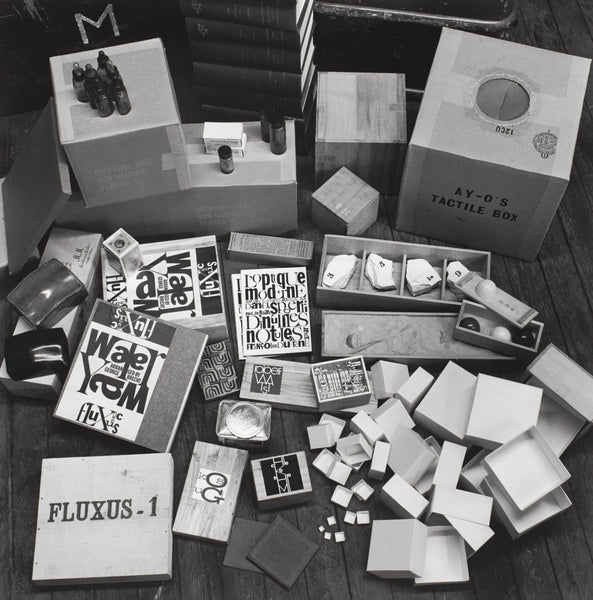
George Maciunas, Products for Fluxus editions, 1964.
(Fluxus Art Movement: Definition, Artists and Examples - dans le gris)
The Fluxus movement drew inspiration from a wide range of influences, including Dadaists, Marcel Duchamp, John Cage, Karlheinz Stockhausen, Nam June Paik, and Futurists. Fluxus emphasized the artist's personality and individual actions over traditional notions of professionalism.
Influenced by John Cage's concept of the "prepared piano," Maciunas developed ideas such as "prepared sports," multi-bike vehicles, humorous food events, and "humorous dances" on sticky floors. The main ideas of Fluxus were loosely formulated as internationalism, experimentalism, inter-media exploration, playfulness, minimalism, and ephemerality.
(Fluxus Art Movement: Definition, Artists and Examples - dans le gris)
Continue Reading:
• What is Contemporary Art? Definition, Characteristics and Artists
• Surrealism in Art: From the Unconscious Dream to Artistic Reality
• What is Conceptual Art? Art is Not About the Object?
• Dadaism: The Anti-Art Movement in Modern Art
(Fluxus Art Movement: Definition, Artists and Examples - dans le gris)
About Us
Dans Le Gris is a brand that started with everyday jewelry; each handmade piece is designed and crafted in Taiwan. We deeply value every detail, dedicating ourselves to creating enduring pieces through collaboration with experienced craftsmen.
(Fluxus Art Movement: Definition, Artists and Examples - dans le gris)
In our journal, we provide irregular updates featuring articles about art, culture, and design. We aspire to furnish our readers with profound insights and inspiration across a broad array of creative subjects. From the daily inspirations found in art and design to the timeless beauty of traditional craftsmanship and philosophy, our curated content encompasses diverse aspects of life.

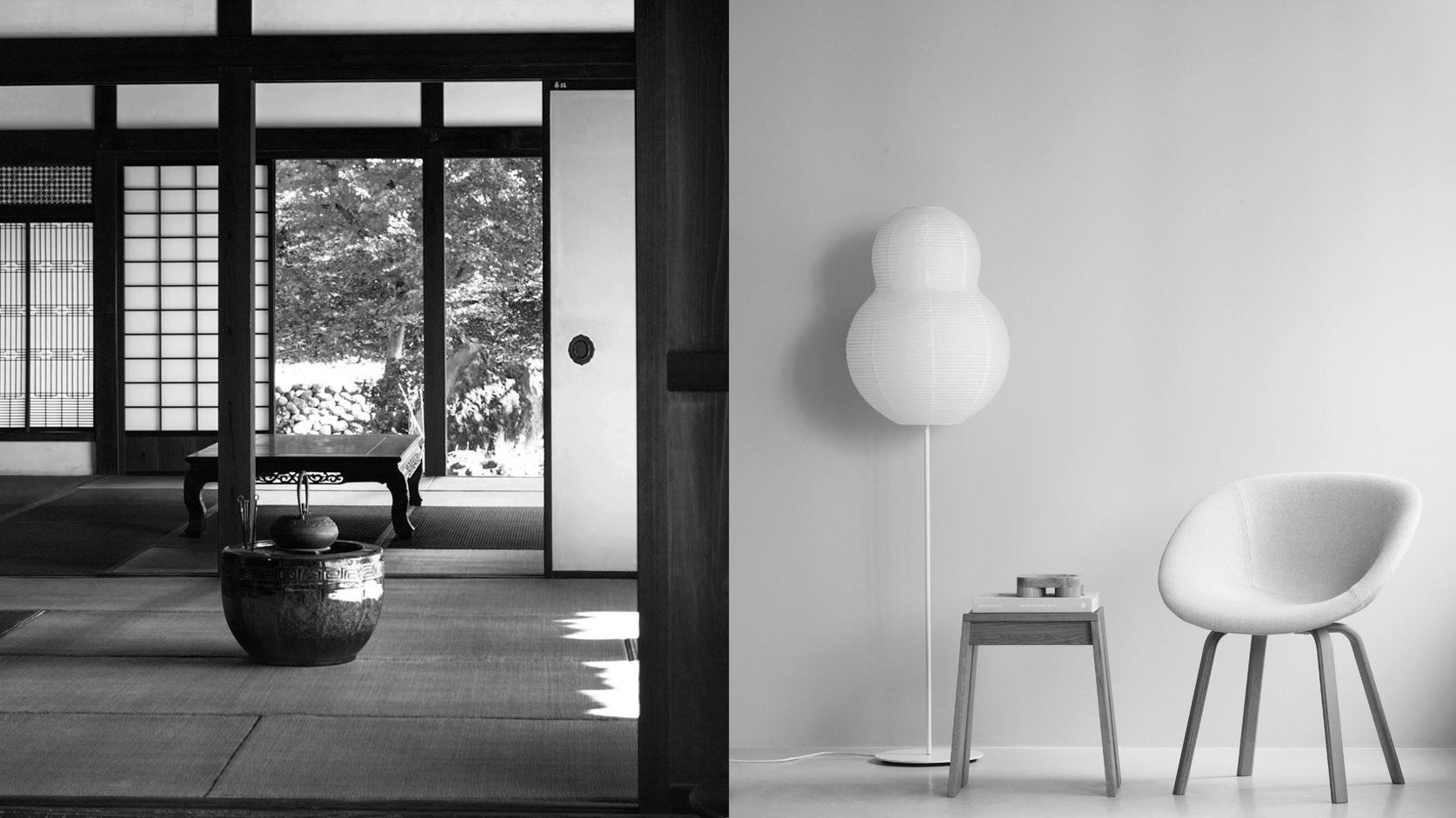


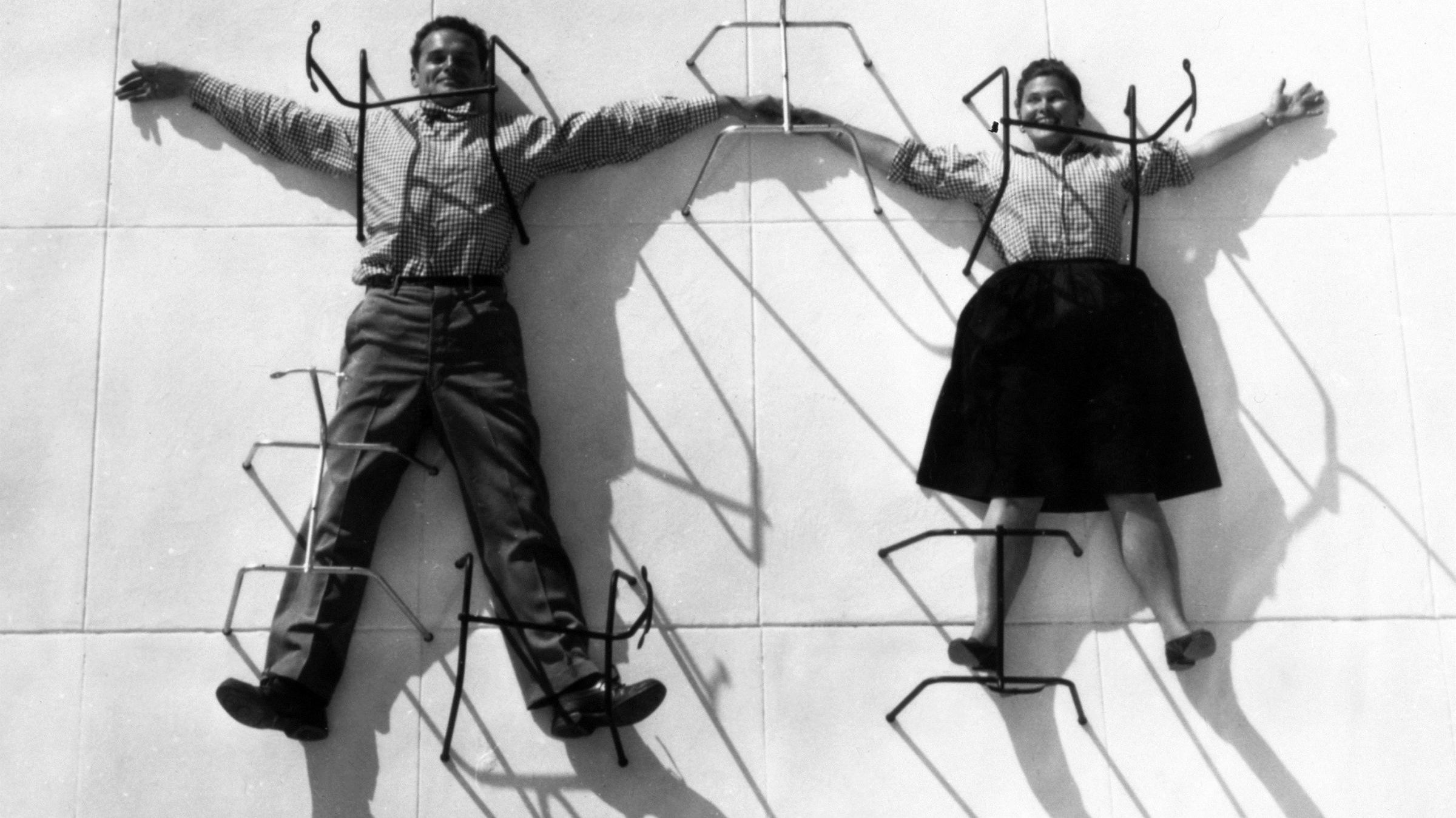
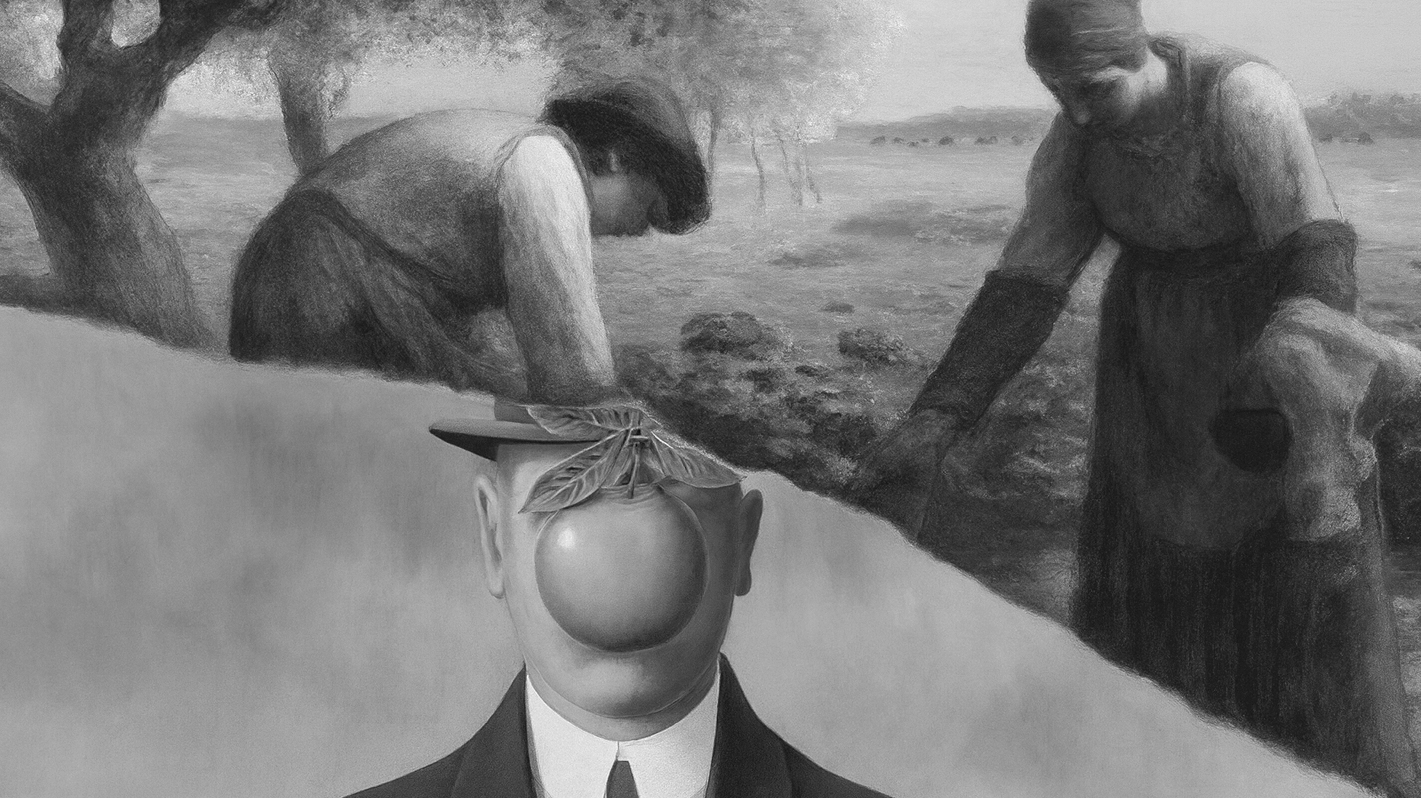
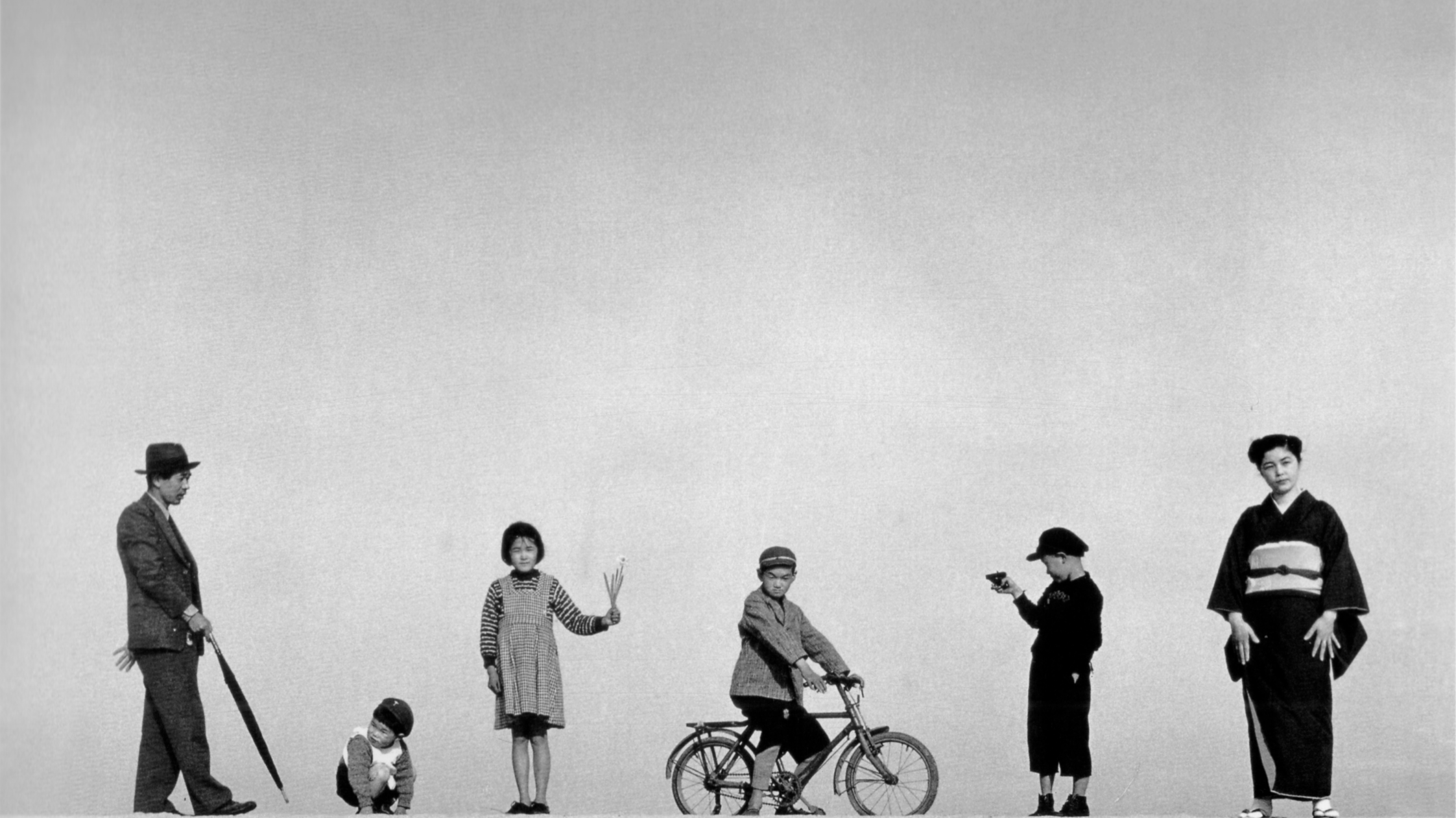
Comments
Alison Knowles, early AI poet, was originally part of Fluxus.
Loved this😍